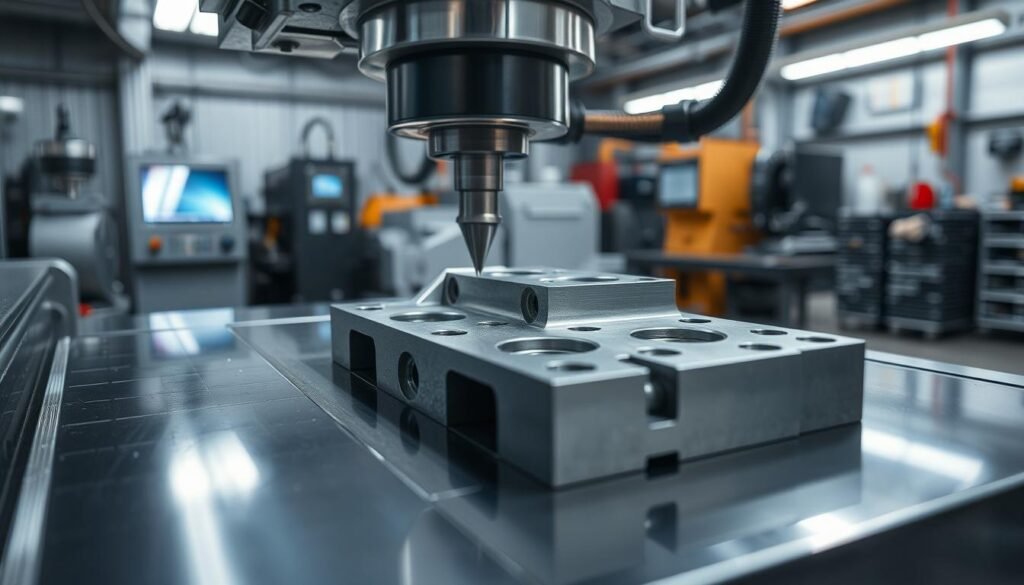Introduction to Plastic Pollution and the Urgency of Recycling
Our planet is grappling with a seemingly insurmountable issue: plastic pollution. Plastic, a material cherished for its durability and versatility, has become a pervasive contaminant, amassing not only in our landfills but also in our oceans, rivers, and ecosystems. Approximately 380 million tons of plastic are produced annually, with a significant percentage destined for single-use products that quickly become waste. Despite the longevity of plastic—which can persist in the environment for centuries—the reality is that only 9% of all plastic ever produced has been recycled.
The omnipresence of plastic waste underscores a catastrophe in the making. Microplastics, minute particles that result from the breakdown of larger plastic items, have infiltrated food chains, threatening wildlife and human health alike. The environmental toll is apparent, with images of marine life ensnared in plastic remnants surfacing as haunting reminders of this systemic issue.
To mitigate the daunting impact of plastic pollution, recycling surges as a critical response. Recycling presents an opportunity to reduce the volume of plastic waste, curb the consumption of new raw materials, and lessen energy usage in plastic production. Advancements in plastic recycling technology further this cause, offering the promise of a more efficient and effective recycling process.
The urgency of recycling is evident, necessitating immediate attention and action from consumers, businesses, and governments worldwide. By embracing innovations such as plastic recycling machines, there is potential to incite a transformative shift towards environmental sustainability. These machines pose an instrumental step in bolstering recycling efforts, easing the strain on natural resources, and forging a more circular economy. As the environmental stakes continue to soar, the role of plastic recycling machines in combating plastic pollution becomes ever more consequential.
The Rise of Plastic Recycling Machines: A Brief History
The genesis of plastic recycling machines can be traced back to the early 20th century. However, it wasn’t until the 1970s and the environmental movements of that era that the potential of these machines began to be fully realized. With the growing awareness of environmental issues, the need for sustainable waste management solutions became evident, and recycling emerged as a critical component of these efforts.
The development of plastic recycling technology accelerated in the 1980s as the demand for recycled materials increased. During this period:
- Research and Innovation: There were significant investments in research and development to improve the efficiency and effectiveness of plastic recycling machines. They evolved to handle more types of plastics and to process them more thoroughly.
- Mechanical Recycling: This process, which involves the physical reprocessing of plastics, became more popular. Machines were designed to sort, wash, shred, and remelt plastic waste into new products, closing the loop on plastic use.
- Advances in Identification: Technologies such as near-infrared spectroscopy (NIRS) were introduced to automate the sorting process, allowing for a more precise separation of different types of plastics.
Into the 1990s and 2000s, there was a marked shift towards integrating more sophisticated systems into the recycling process. Sustainability efforts gained global attention, and with it, the pressure on manufacturers and policymakers to support recycling initiatives intensified. The influx of diverse and complex plastic materials on the market spurred the creation of advanced machinery capable of processing multiple resin types and formats.
Presently, the growth in artificial intelligence and robotics is set to usher in a new era for plastic recycling machines. Smart machines that can identify, sort, and process waste with minimal human intervention are on the horizon, promising an era of precision and efficiency in plastic recycling. These developments not only mark significant technological milestones but also pave the way for improved environmental sustainability, as these advanced systems are poised to dramatically increase recycling rates and reduce the ecological footprint of plastic waste.
The Technology Behind Plastic Recycling Machines
The machinery that powers the recycling of plastics is a marvel of modern engineering, being both complex and capable of handling the diverse nature of plastic waste. At the core of these machines lies a series of processes designed to clean, sort, shred, melt, and reform plastic materials into a state ready for repurposing.
Sorting Technology
- Infrared (IR) spectroscopy: This technology is used to identify and separate different types of plastics. Plastics emit unique spectra when subjected to infrared light, allowing machines to sort them efficiently.
- Air classification: A system that uses air flow to separate light, such as films and foams, from heavier plastic fractions.
- Density separation tanks: These tanks use fluids to separate plastics based on their density, which is essential for purifying the streams of recycled material.
Size Reduction
- Shredders and granulators: After sorting, plastic items are fed into shredders and granulators to reduce their size into smaller, more manageable flakes or pellets. This facilitates easier washing and processing.
Washing and Separation
Plastic flakes are subjected to a series of cleaning processes to remove impurities, such as food residue, labels, or adhesives. This is critical to ensure the quality of the recycled plastic.
Melting and Extrusion
- Extruders: They are machines that heat the cleaned and shredded plastics until they melt. After melting, the plastic is extruded through a die to form new raw materials, such as pellets, which are then used to manufacture new products.
Quality Control
Continuous monitoring and automated systems ensure that the final product meets the required standards. For instance:
- Near-infrared (NIR) scanners track the quality of the recycled pellets.
- Melt flow index testers measure the viscosity of the molten plastic to make sure it is suitable for specific applications.
Full-System Integration
Modern plastic recycling machines often feature integrated systems with computer controls and advanced software to optimize each step of the recycling process, ensuring efficiency, accuracy, and minimal waste.
With advancements in technology, innovations such as AI and robotics are increasingly being incorporated into these machines, improving the sorting and processing capabilities. This technology is pivotal for enhancing the proficiency of plastic recycling facilities and, in turn, contributing significantly to environmental sustainability.
Advancements in Plastic Recycling Technologies
The advent of cutting-edge innovations in plastic recycling technologies has significantly bolstered environmental sustainability efforts. Chief among these is the development of more sophisticated sorting mechanisms, such as infrared and AI-powered identification systems, which enable the separation of plastic types with precision that was previously unattainable. Enhanced sorting facilitates the recovery of higher quality recyclable materials, increasing the efficiency of the recycling process.
- Sophisticated sorting technologies
- Infrared identification systems
- AI-driven sorters
- Enhanced polymer identification accuracy
- Improved quality of recyclables
Moreover, chemical recycling techniques have taken a forefront position, enabling the breakdown of plastics into their monomeric components. Unlike traditional mechanical recycling, chemical processes can handle a broader spectrum of plastics, including those deemed non-recyclable in the past. This transformative approach is paving the way for a circular plastics economy, where materials can be endlessly repurposed.
- Chemical recycling methods
- Breakdown into monomers
- Handling previously non-recyclable plastics
Additionally, breakthroughs in enzyme engineering have given rise to biological recycling solutions. Modified bacteria and bespoke enzymes can now degrade certain types of plastics, providing a more environmentally friendly recycling path. This biotechnological revolution holds the potential to complement existing mechanical and chemical recycling processes, offering a biodegradable solution to plastic waste challenges.
- Biological recycling innovations
- Engineered bacteria and enzymes
- Biodegradable solutions for plastic waste
Lastly, the surge in modular and mobile plastic recycling units presents a flexible alternative. These units facilitate onsite recycling operations, reducing transportation costs and emissions, and also catering to remote locations. These modern technologies are not only an ally in the quest for sustainable materials management but also serve as a beacon of hope in the restoration of ecological integrity.
- Modular and mobile recycling units
- Onsite recycling capabilities
- Emission reduction and remote area servicing
The Role of Plastic Recycling Machines in Waste Management
Plastic recycling machines are pivotal in the processing of plastic waste, tasked with transforming discarded plastics into reusable materials. These machines serve as critical components in the waste management infrastructure, offering an effective solution to the environmental challenges posed by plastic pollution.
By shredding, cleaning, melting, and reconstituting plastic waste, recycling machines convert what would be environmental hazards into valuable raw materials. The recycled plastics can be repurposed for the production of new products, thereby reducing the demand for virgin plastic production, which is a highly polluting and resource-intensive process.
The key roles of plastic recycling machines in waste management include:
- Processing Efficiency: These machines have the capacity to process large quantities of plastic, making the recycling process more efficient and scalable.
- Waste Volume Reduction: By recycling, the volume of plastic waste intended for landfills or incinerators is significantly decreased, saving valuable landfill space and reducing the release of pollutants into the atmosphere.
- Resource Conservation: Recycling machines conserve natural resources by reducing the need for new plastic material, which is often derived from fossil fuels.
- Energy Savings: The production of plastics from recycled materials consumes less energy compared to making plastics from scratch, leading to a reduction in the overall energy footprint of plastic production.
- Economic Benefits: Recycling machines create economic opportunities through the establishment of recycling plants and the creation of jobs related to waste management and material processing.
- Innovation Promotion: Through the evolution of recycling technologies, these machines become more sophisticated, promoting innovation in the types of plastics that can be recycled and the efficiency with which they are processed.
In essence, plastic recycling machines are integral to effective waste management strategies, mitigating the impact of plastic waste on ecosystems and contributing immensely to environmental sustainability. By leveraging these machines, communities and industries can close the loop on plastic use and foster a circular economy.
Quantifying the Impact: How Recycling Machines Reduce Environmental Strain
The deployment of recycling machines has a tangible and positive effect on reducing environmental strain. These specialized machines facilitate the recovery and reprocessing of plastic materials, lessening the need for virgin material production. First and foremost, recycling machines conserve natural resources. The reuse of plastics means a decreased demand for new materials, thus sparing oil and gas, which are primary raw materials for virgin plastic production.
The energy savings associated with recycling plastic are significant. By utilizing recycling machines, the energy expenditure in creating new plastic is significantly reduced, with estimates suggesting that recycling plastics can save up to two-thirds of the energy required for virgin production. Furthermore, the carbon footprint of plastic production is minimized. For every ton of plastic recycled, there is a corresponding reduction in greenhouse gas emissions, contributing to the fight against climate change.
Additionally:
- Recycling machines contribute to the reduction of plastic pollution. By repurposing what would otherwise be waste, fewer plastics find their way into landfills, rivers, and oceans.
- These machines also stimulate job creation in the recycling industry, providing an economic boost while supporting environmental sustainability.
- Advanced sorting technologies within recycling machines allow for greater precision in separating plastics, enhancing the quality of the recycled material and making it more suitable for high-value applications.
Through quantitative metrics like resource conservation, energy savings, carbon footprint reduction, pollution mitigation, and economic gains, the role of recycling machines in easing environmental strain is substantial. This multifaceted approach underscores their indispensability in the journey toward improved environmental sustainability.
Benefits of Plastic Recycling Machines for Local Communities
Local communities stand to gain significantly from the introduction and utilization of plastic recycling machines. These benefits manifest in several key areas:
Economic Advantages
- Job Creation: Implementing plastic recycling operations can lead to employment opportunities, both direct and indirect. Direct jobs are those involving the operation and maintenance of the recycling machines, while indirect jobs can emerge in areas such as collection and transportation of plastics.
- Revenue Generation: Sale of recycled plastic material can become a source of revenue. It can also attract investment to local communities as the recycling industry grows.
Environmental Impact
- Reduction in Pollution: By processing plastic waste on-site, communities contribute to lessening plastic pollution, thereby protecting wildlife and preventing clogging of waterways.
- Conservation of Resources: Recycling means less reliance on raw materials, preserving natural resources and reducing the carbon footprint associated with producing new plastics.
Social Implications
- Community Engagement: Recycling programs often rely on community participation, creating a sense of collective action and responsibility towards a sustainable environment.
- Education and Awareness: The presence of recycling machinery offers an educational opportunity for local residents, particularly youths, to learn about the importance and mechanics of recycling.
Health and Well-being
- Improved Public Health: By promoting cleaner surroundings, communities decrease the risks associated with plastic waste accumulation, such as waterborne diseases and breeding grounds for pests.
Infrastructure Development
- Innovative Solutions: The need for plastic recycling can drive innovation in local infrastructure, leading to improved waste management systems and technologies.
These advantages demonstrate that plastic recycling machines are not just tools for waste management but catalysts for broader socioeconomic and environmental progress within local communities.
Challenges and Limitations of Current Plastic Recycling Machinery
Despite the potential benefits of plastic recycling machines on environmental sustainability, there are several challenges and limitations that hinder their effectiveness.
- Inefficiency in Sorting: Modern recycling machinery often struggles with sorting plastics effectively. Different types of plastics need to be separated before they can be processed, but many machines cannot adequately detect and sort plastics by type. This leads to contamination and lower quality recycled material.
- Complex Plastic Polymers: Some plastic products are made from complex polymers that are difficult to break down. Current machinery may not be advanced enough to process these materials, resulting in a significant portion of plastics being deemed unrecyclable.
- High Contamination Levels: Plastic waste often comes with high levels of contamination from food residue, labels, and other non-plastic materials. Recycling machinery that is unable to handle such contamination has to discard otherwise recyclable plastics.
- Energy Consumption: Plastic recycling machines can be energy-intensive, with the process of recycling sometimes consuming more energy than it saves. This paradoxically can lead to increased carbon emissions, offsetting the environmental benefits intended by recycling.
- Limited Lifespan of Machinery: The machines themselves can have a limited operational lifespan and can be costly to maintain and replace. This poses a financial challenge, especially for smaller facilities, impacting the overall feasibility of recycling operations.
- Adaptability to New Plastics: As new types of plastics are developed, recycling machinery may not keep pace with the ability to process them. This results in a growing volume of new, unrecyclable plastic waste.
The current state of plastic recycling technology underscores the need for improved machinery and processes. Without advancements to address these challenges, the goal of creating a circular economy for plastics will be difficult to achieve.
Case Studies: Success Stories in Plastic Recycling Operations
Plastic recycling operations across the globe have seen varying levels of success. By implementing innovative plastic recycling machines and practices, some have managed to create sustainable models that benefit the environment and the economy. Here are a few standout examples:
- Precious Plastic – Initiated as a project by Dave Hakkens, Precious Plastic is a global community that encourages people to recycle plastic on a local scale. The movement provides open-source designs for plastic recycling machines, enabling people worldwide to build their own and start recycling plastic. Communities have successfully set up workshops, creating valuable products from waste plastics and inspiring local engagement in environmental sustainability.
- The Ocean Cleanup’s Interceptor – The Ocean Cleanup has expanded its focus beyond cleaning up marine debris to stop plastic waste from reaching oceans. Its Interceptor is a river-based plastic collection system. The Interceptor targets rivers that carry significant amounts of waste to the sea. With positive results and plenty of plastic captured, this model shows how intercepting waste before it becomes marine debris is a vital part of the recycling chain.
- PetStar Recycling Plant, Mexico – Touted as one of the world’s largest food-grade PET recycling plants, PetStar integrates the circular economy into its operations. By recycling used PET bottles, the facility produces new PET bottles, effectively creating a closed-loop system. It demonstrates the financial and environmental benefits of high-capacity, technologically advanced recycling operations.
- EcoAct Tanzania – Innovatively tackling plastic pollution and affordable housing issues, EcoAct Tanzania uses plastic extrusion technology to turn plastic waste into durable construction materials. Their efforts have not only reduced plastic trash in the region but have also provided low-cost housing materials for local communities.
These case studies exhibit the breadth and depth of successful plastic recycling operations. From small-scale, community-focused projects to large, industrial ventures, these operations demonstrate that with the right technology and community engagement, plastic recycling can be a linchpin in the pursuit of environmental sustainability.
Innovations in Plastic Recycling: From Machines to Products
The evolution of plastic recycling has been significantly propelled by technological advancements in recycling machinery. Notably, these innovations extend from the machinery that processes the plastic to the products that emerge from the recycled material.
- Advanced Sorting Systems: Enhanced sorting technologies, such as near-infrared (NIR) sorters, have elevated the efficiency of recycling facilities. These systems accurately separate plastics based on resin composition and color, allowing for a higher purity in recycling streams.
- Chemical Recycling Technologies: Machines that use chemical processes, like pyrolysis and depolymerization, have pioneered a shift in plastic recycling. Instead of simply remolding, these technologies break plastics down to their chemical building blocks, providing materials that are indistinguishable from virgin plastics.
- Energy-Efficient Granulators: Innovations in grinding equipment have led to the development of energy-efficient granulators. These machines are vital in reducing plastic to a size suitable for reprocessing, while minimizing energy consumption.
- Intelligent Robotics: Robotics equipped with artificial intelligence (AI) improve the precision and speed of the recycling process. These robots can identify and sort recyclable materials more quickly than human labor, which reduces contamination rates and enhances material recovery.
The resultant products from these sophisticated processes extend the life cycle of plastics and contribute to a circular economy. Recycled plastics are now being used to create:
- Construction Materials: Insulation, pipes, and carpeting are now made using recycled plastics, which are praised for their durability and sustainability.
- Textiles and Apparel: Recycled plastics are spun into fibers to produce a variety of apparel options, offering an alternative to traditional fabric production.
- Packaging Solutions: With an emphasis on sustainability, brands are turning to recycled plastics for packaging, thereby reducing the demand for new plastic production.
- Automotive Parts: The automotive industry has recognized the value in using recycled plastic components for various car parts, thus contributing to weight reduction and improved fuel efficiency.
This cascade of innovation in recycling not only benefits the environment by reducing waste and conserving resources but also creates a wide array of ecologically responsible products.
Global Trends: The Adoption Rates of Plastic Recycling Technologies
The urgency to mitigate the environmental impacts of plastic waste has spurred the widespread adoption of plastic recycling technologies. Globally, Europe has been at the forefront, implementing stringent policies and incentives to encourage the uptake of these recyclative processes. The EU targets a formidable 50% plastic packaging recycling rate by 2025, fostering innovation and investment in the sector.
In the Asia-Pacific region, the landscape is diverse. Economies such as Japan and South Korea exhibit high adoption rates, driven by technology advancements and environmental awareness. Meanwhile, developing nations grapple with infrastructural and educational barriers, though international grants and collaborations are helping to accelerate progress.
North America shows a mixed response with substantial investments made in advanced sorting and recycling technologies but faces challenges with collection systems and contamination levels. The US has seen a slower retrofit of recycling facilities with cutting-edge tech compared to Canada, which adopts a more proactive approach.
- The adoption of mechanical recycling remains prevalent due to its cost-effectiveness; however, its limitations in handling mixed or contaminated plastics have led to increased interest in chemical recycling.
- Pyrolysis, a chemical recycling approach, is gaining traction as it can process a variety of plastic wastes, including those traditionally considered non-recyclable.
- Biodegradable and compostable plastics are also emerging as alternatives, though their environmental benefits are under scrutiny, highlighting the need for effective industrial composting facilities.
Countries with robust economic resources tend to have higher adoption rates due to the significant investment required for state-of-the-art recycling machinery. Conversely, low- and middle-income countries often rely on manual or semi-automated processes due to cost constraints. However, global entities like the World Bank are providing funding to help bridge this technological gap.
Economic Implications of Investing in Plastic Recycling Machines
Investing in plastic recycling machines is not only a step towards environmental sustainability but also a strategic economic decision with potential for substantial benefits. The initial capital outlay for setting up a recycling plant can be considerable, yet the long-term economic implications justify the investment.
Firstly, plastic recycling machines create a source of revenue. Recycled materials can be sold to manufacturers who are turning towards sustainable raw materials to meet consumer demands and regulatory requirements. There is a growing market for recycled plastics, and supplying this demand can be profitable.
Secondly, operating a plastic recycling facility can lead to job creation. Skilled and unskilled labor is required to run the machines, sort materials, and perform maintenance. This contributes to economic growth and offers opportunities for community development.
In addition, there are possible savings associated with waste management. Recycling plastic reduces the need for landfill space, which can be costly and scarce. By processing recyclables internally, municipalities can realize significant cost savings in waste disposal fees.
Another consideration is the potential for financial incentives from governments that support recycling initiatives. Subsidies, tax breaks, and grants can offset some of the investment and operational costs, making the economic case for plastic recycling machines even more compelling.
Lastly, advancements in recycling technology may lead to more efficient systems and lower operational costs over time. This could make recycling an even more attractive investment as processes become cheaper and the quality of recycled materials improves, providing a more competitive edge against virgin materials.
The economic implications of investing in plastic recycling machines align with a sustainable future, offering a profitable avenue while promoting environmental responsibility.
The Future of Plastic Recycling: Emerging Technologies and Machines
The landscape of plastic recycling is on the cusp of transformation with advancements that promise to enhance environmental sustainability. Innovators are developing cutting-edge technologies and machines geared towards making plastic recycling more efficient, cost-effective, and versatile.
- Chemical Recycling: Unlike traditional mechanical recycling, which has its limitations, chemical recycling breaks down plastic waste into its molecular components. These can then be repurposed to create new, high-quality plastic materials. Emerging chemical recycling machines are poised to handle a broader range of plastics, including those currently deemed unrecyclable.
- Enzymatic Recycling: Is the natural evolution of biotechnological applications in sustainability. Scientists are researching enzymes that can digest plastics into basic substances that can be reused in new products. The technology aims for a fully circular recycling model that’s less energy-intensive than current methods.
- Intelligent Sorting Systems: Next-generation sorting machines use artificial intelligence (AI) to identify and separate different types of plastic materials with unprecedented precision. This reduces contamination rates and improves the quality of the recycled product.
- Blockchain for Traceability: Blockchain technology is being integrated into recycling operations to track the lifecycle of plastic products. This transparent tracking system could revolutionize how materials are managed, leading to more accountable recycling processes.
These technologies, in combination, point to a revolutionary shift in plastic recycling capability. By increasing the types and quantities of plastic that can be effectively recycled, they help mitigate one of the modern era’s most pressing environmental challenges. The roll-out of these innovative machines and systems represents a critical move towards closing the loop on plastic use and championing a more sustainable model of consumption and waste management.
Policy and Regulation: How They Shape the Use of Plastic Recycling Machines
The landscape of plastic recycling machines is heavily influenced by policy and regulation, which can either facilitate or hinder their adoption and utilization. Governments play a crucial role through the creation of frameworks that determine how these machines are used, who can operate them, and the processes involved in the recycling chain.
- Mandates for Recycling Practices: Regulations often dictate the minimum standards for recycling practices. This can include the requirement for specific types of plastic recycling machines, setting performance benchmarks, and ensuring the purity of recycled materials. When stringent, these mandates can encourage investment in advanced recycling machinery.
- Subsidies and Incentives: To stimulate the use of plastic recycling machines, policies may offer financial incentives such as subsidies, tax breaks, or grants. These incentives can lower the economic barriers for businesses and municipalities wanting to invest in recycling technology, thereby bolstering market growth.
- Zoning and Licensing: Rules regarding the placement and operation of recycling machines, including zoning laws and licensing requirements, affect accessibility and convenience. By determining where these facilities can be located, policy can either make it easier or more challenging for recycling operations to expand their reach.
- International Standards and Agreements: Global agreements on waste management, like the Basel Convention, influence national regulations. They can drive the adoption of recycling machinery that meets internationally recognized standards and facilitates the trade of recycled materials.
- Impact of Regulations on Innovation: Regulations can spur innovation by setting ambitious recycling targets. Companies are often motivated to develop new technologies and improve existing plastic recycling machines to meet these regulatory requirements.
The interplay between policy, regulation, and the use of plastic recycling machines is a dynamic one. The right mix of regulations can substantially aid in maximizing the environmental benefits of plastic recycling, leading to a more sustainable future. However, overly restrictive or complex regulations may impede progress, underscoring the need for well-thought-out policies that support technological advancements in the recycling industry.
Call to Action: How Industries and Individuals Can Support Sustainability Through Recycling
Recycling isn’t just an environmental imperative but a collective responsibility. Industries and individuals alike have a role to play in enhancing the sustainability of our planet by embracing and facilitating the process of recycling.
For industries, the integration of plastic recycling machines into their production cycle is a significant stride towards sustainability.
- Adopting Plastic Recycling Machines: Companies should invest in state-of-the-art recycling machinery that can process waste plastic efficiently and turn it into useful raw materials, thus reducing the dependency on virgin materials.
- Implementing Recycling Programs: Workplace recycling programs should be established and incentivized to encourage employees to contribute to recycling efforts daily.
- Engaging in Producer Responsibility: Businesses must take responsibility for the lifecycle of the products they create, ensuring that they’re recyclable or providing avenues for their responsible disposal.
As for individuals, small actions can accumulate to create a substantial impact:
- Making Informed Choices: Consumers should opt for products with recyclable packaging and advocate for sustainable practices by supporting responsible companies.
- Proper Sorting of Waste: Diligently separating recyclables from general waste is crucial in ensuring that materials like plastic can be appropriately processed.
- Participating in Local Recycling Initiatives: Engaging with community recycling programs helps raise awareness and spreads the culture of recycling among the populace.
- Educating Oneself and Others: Staying informed about the recycling process and educating peers enhances collective understanding and commitment to sustainability.
It’s also beneficial for schools and local government bodies to amplify the message by organizing educational sessions on recycling and helping set up community-based recycling centers. By joining forces, industries and individuals can drive the message of sustainability forward and make recycling a universally adopted practice.






